Stores
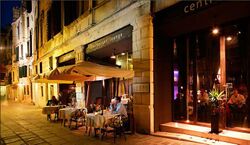 Caffe' Centrale in Venice | |
| Basic Information | |
|---|---|
| Total Stores in Venice | 4980 |
| Types of Stores | |
| Tourist | 72% |
| Residential | 22% |
| Mixed | 6% |
Stores, known in Italian as negozi, are any retail establishments that sells goods or services, with the exception of hospitality services. These include bakeries, supermarkets, clothing stores, restaurants, dry cleaners, etc.
History
Venice has always depended on trade and commerce. Venice not only welcomed economic activity but recognized that the city’s strength and well-being rested on a foundation of trade and the profits trade produced. [1] Niccolo Machiavelli stated that Venetian wealth is based on merchandise and movable goods.[2] Since the stores in Venice are an indicator of the situation the city is in today, trends in the stores and their characteristics can promote understanding of how the city has changed.
The traditional stores and marketplaces in Venice reflect changes in the economic and political history of the city. Because of the changes that have occurred in Venice, there have been drastic changes in the ways that traditional marketplaces in Venice operate. For example, the Rialto marketplace, the most famous market in Venice, has changed a lot since it was created. For most of its history the Rialto was the main market where the necessities of daily life were sold, though not the only one. The biggest change in the Rialto market came about in the twentieth century, when the retail and wholesale markets –originally combined on this site –were split, causing a large shift in types of the people shopping in there.[3] Big changes have also occurred in other marketplaces, including the old fish market and the old produce and cheese markets.
Types and Number of Stores
There is a total of 4,980 stores in Venice. These stores are varied, including stores selling goods like food, souvenirs, clothing, and art and stores selling services like real estate, funeral services, and repair.
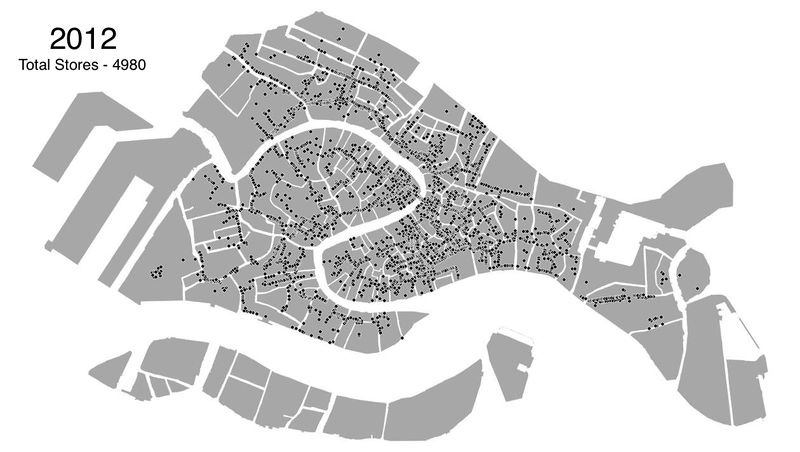
These stores are distributed throughout the six sestieri of Venice. The districts with the highest density of stores are San Marco and San Polo, the districts with the higest population of tourists.
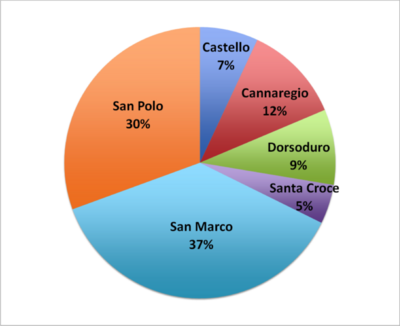
There are three main categories of stores in Venice: stores catering to tourists, stores catering to residents, and stores catering to both. These categories can be further refined by stores predominantly catering to tourists, stores somewhat catering to tourists, stores predominantly catering to residents, and stores somewhat catering to residents. The percentage of stores catering to tourists in Venice is 72%, while the percentage of stores catering to residents is 22% and serving both is 6%.
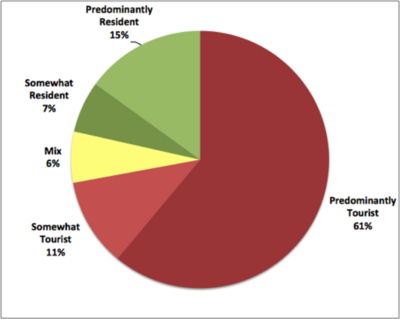
Changing Patterns of Stores
Because there has been a steady decline of residents living in Venice and a large increase in tourists visiting Venice, the numbers of each type of store has been shifting.
Since 2004, there have been at least 44 stores that have changed from catering to residents to catering to tourists. The main reason for the increase in tourist stores is that if there is a high population loss in an area along with an increase in the density of tourist beds, there will be a trend in stores changing from serving the local population to serving the tourist population. The exception to this is that if the area already has many tourist stores, there will not be a large increase in the number of stores changing to tourist stores.
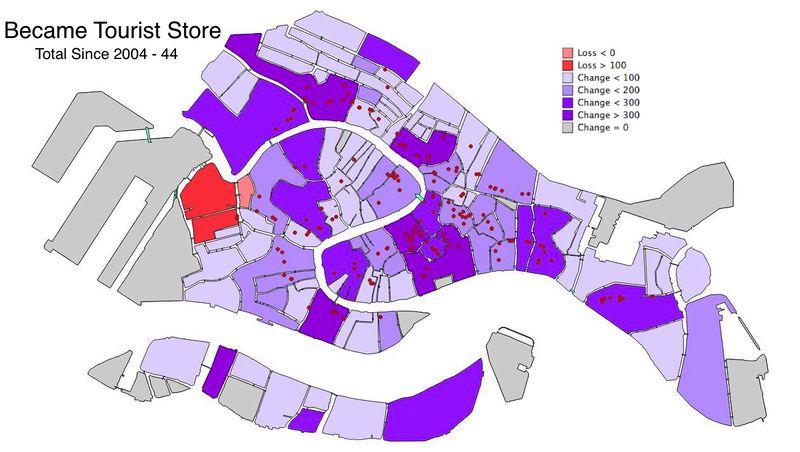
Likewise, since 2004 there have been at least 37 stores that have changed from catering to tourists to catering to residents. There are many possible reasons for these changes, including lack of supply in certain areas of Venice, oversaturation of tourist stores, and increase in population. One possiblity for this is that, in the rush to cater to tourists, there was a drop in stores catering to residents. This drop created a drop in the supply, even though there was still demand in the area for resident stores. Because there is still a demand for resident stores, there are now more stores moving in that are catering to residents.
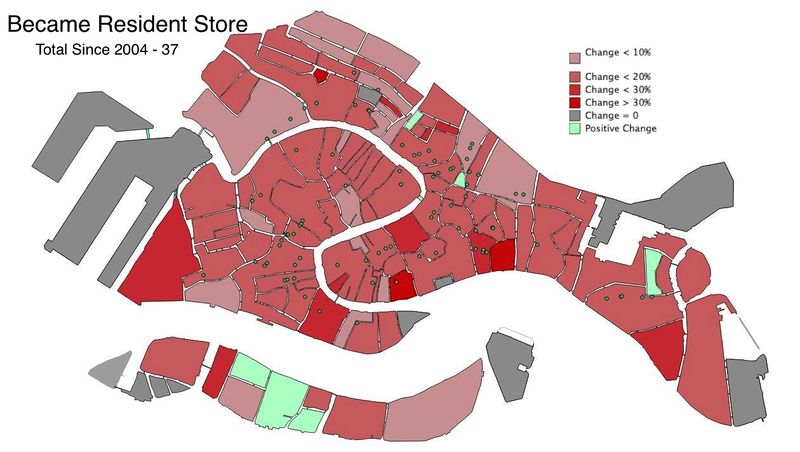
Supermarkets
Another big change that is occurring in Venice is the spread of large supermarkets. Traditionally, Venice has only had small specialty food stores like bakeries, produce stores, or dairy stores that provided specific products. However, the first supermarket in Italy opened in 1957 in Milan, setting off a wave of supermarkets that would soon spread throughout all of Italy. In 2010, a group of students from Worcester Polytechnic Institute found that there were thirteen supermarkets, throughout the different sestieri in Venice. Although supermarkets offer goods at lower prices with greater convenience, they have contributed to the decline of local shops and stalls. In 2006, a different group of students interviewed locals and many locals had concluded that ninety-three percent of residents shop at supermarkets either always or often and only about twenty-five percent of residents shop at small stores regularly.[4] Supermarkets are able to provide a variety of goods at low prices and are very convenient places to shop. By providing an alternate model of shopping that is cheaper and more convenient than smaller shops, they have taken away demand for smaller, more expensive shops.
NACE Coding System
The NACE Coding System is a standard system used by the European Union in order to standardize how the data is categorized and to simplify the analysis of the trends in the stores and tourist accommodations in Venice. Retail stores make up a large portion of these codes and a selection is shown below.
Antiques G52.50.1
Art G52.48.2
Bakery G52.24.1
Florist G52.48.9
Grocery Store G52.11
Luxury G52.42.1
Pharmacy G52.31
Souvenirs G52.48.19
See Also
References
- ↑ James H. McGregor, Venice from the Ground Up (Cambridge, Mass: Belknap Press of Harvard University Press, 2006), 80.
- ↑ Mike Marqusee, Venice: An Illustrated Anthology (Topsfield, Ma: Salem House, 1989), 71.
- ↑ James H. McGregor, Venice from the Ground Up (Cambridge, Mass: Belknap Press of Harvard University Press, 2006), 272-273.
- ↑ Christopher Pinola et al., "A Detailed Look at the Changing Venetian Retail Sector" (Worcester Polytechnic Institute, 2012).
Bibliography
NULL
External Links
- 2004 WPI Stores Project Team
- 2005 WPI Stores Project Team
- 2007 WPI Stores Project Team
- 2009 WPI Stores Project Team
- 2010 WPI Stores Project Team
- 2011 WPI Stores Project Team